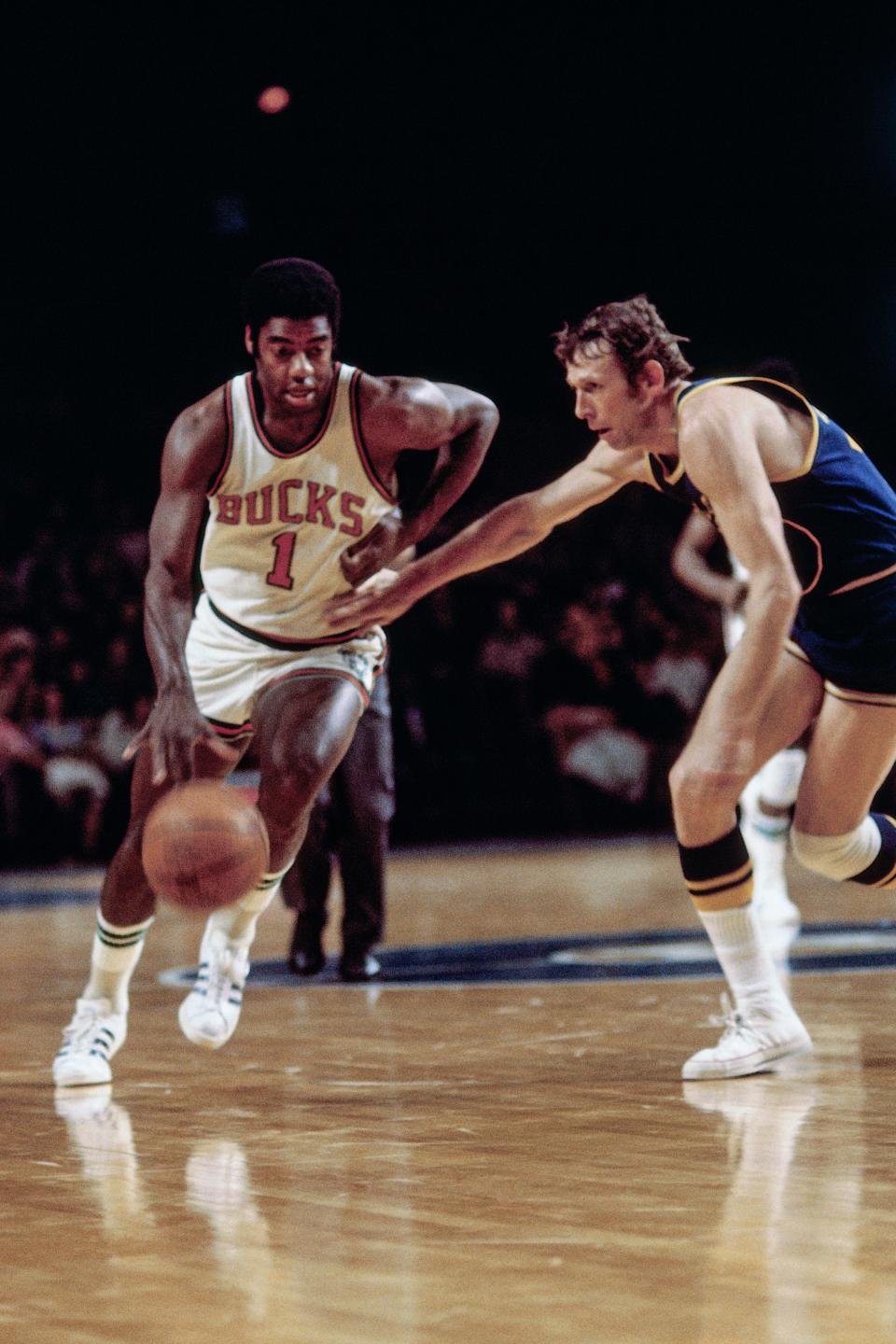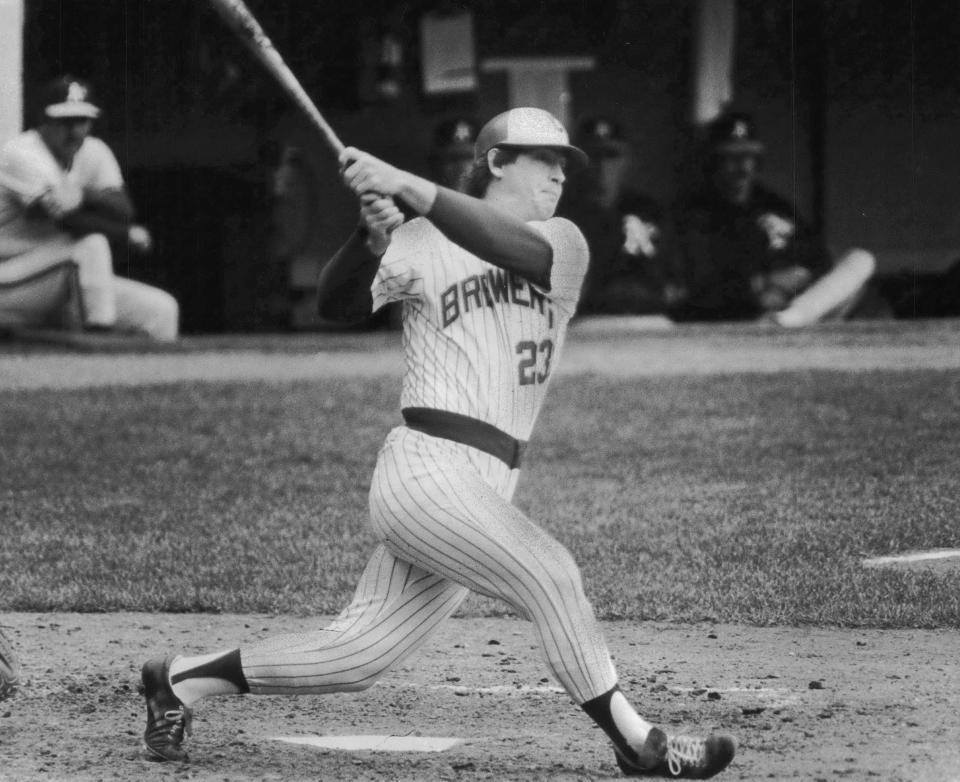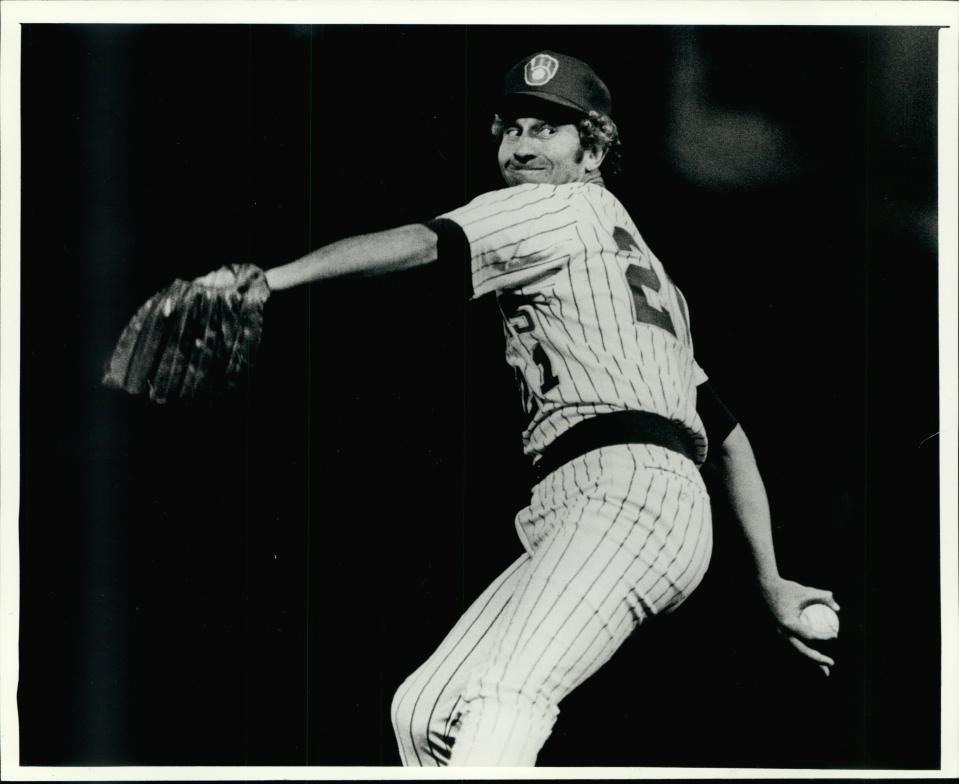Ten times Wisconsin pro sports added a Hall of Famer still in their prime
Damian Lillard's arrival in Milwaukee provides a Pro Basketball Hall of Fame-level supplement to Giannis Antetokounmpo, and the acquisition was immediately regarded as one of the biggest in Wisconsin pro sports history.
It's far from the only time, however, a pro sports team in the state added that level of talent to the fold, often to positive results.

First, some players acquired for only a short time or late in their career
For every Oscar Robertson and CC Sabathia, there are players who were on a Hall of Fame trajectory (even if we didn't know it yet) who were playing out the final years of their career and didn't fundamentally alter the franchise's landscape.
They include:
Pau Gasol. Added late in the season, Gasol only played in three games for the Bucks in 2018-19, a late-season signing who was mostly sidelined by injury; he was inducted in 2022.
Trevor Hoffman. The 2018 inductee spent two years with the Brewers in 2009 and 2010, achieving his milestone 600th career save with the team. He also made the all-star team with Milwaukee in 2009.
Enos Slaughter. The 1985 Hall of Famer played 11 games with the Milwaukee Braves in 1959 at age 43 in his final season of Major League Baseball.

Guy Rodgers. He averaged 10.3 points in the Milwaukee Bucks' inaugural season after getting selected from the Cincinnati Royals in the expansion draft, then served as a point guard in his final season, the first year Lew Alcindor came to town.
Toni Kukoč. The 2021 inductee spent four years in Milwaukee from 2002-06 to close his career, averaging 11.6 points per game in 2002-03. He was acquired in a deal that sent Glenn Robinson to Atlanta in 2002.
Gary Payton. He played in only 28 games for Milwaukee in 2003 after the franchise traded for him in a deal that included Ray Allen going to Seattle, an unpopular deal to this day. He became a Hall of Famer in 2013.
Adrian Dantley. The 2008 inductee played his last NBA season in 1990-91, when he saw action in 10 games for the Bucks at age 35.
Moses Malone. The 2001 inductee played for the Bucks teams of 1991-92 and briefly the year after. In his first season, he played in all 82 games, averaging 30.6 minutes per game and scoring 15.6 points with 9.1 rebounds, all at age 36.
Nate "Tiny" Archibald. He spent his final season in 1983-84 with Milwaukee, starting 46 games for the Bucks and averaging 7.4 points and 3.5 assists. He was inducted in 1991.
Dave Cowens. He came out of retirement to play his final NBA season in Milwaukee in 1982-83 after he'd been away from the game for two years. He averaged 8.1 points and 6.9 rebounds before missing the playoffs with injury and retiring again.
Steve McMichael. Up for discussion with the Class of 2024, he spent the vast majority of his career with the Bears before playing in 1994 at age 37 with the Packers, collecting 2.5 sacks.
Jahri Evans. The offensive guard isn't a slam dunk, but he was a semifinalist in 2023 and could work his way up the ladder to induction. He played his final season in Green Bay in 2017.
Emlen Tunnell. The first Black player inducted into the Hall of Fame was also the first player who strictly played defensive back to earn the honor. He played for the Packers from 1959-61 to close his career, winning an NFL title with the Packers.
Len Ford. He spent the 1958 season in Green Bay, though the Packers had a bad year and Ford was injured, leading to a lawsuit between Ford and the Packers over unpaid wages.
Ted Hendricks. Hendricks played one season in Green Bay in 1974 in the midst of his great career (spent largely with the Colts and Raiders), and he made the Pro Bowl with one of his best seasons (five interceptions, 75 tackles, seven blocked kicks). But the Packers didn't want to meet his contract demand and traded him to the Raiders.
Jan Stenerud. The six-time all-pro played four seasons with the Packers from 1980-83 in his late 30s and early 40s.
But now, 10 difference makers:

Red Schoendienst
The 1989 Hall of Fame inductee was known primarily as a St. Louis Cardinal, but he spent three-plus seasons with the Milwaukee Braves from 1957-60, becoming a key contributor to the 1957 run to the World Series (and finishing third in the MVP voting that year). He made his final all-star team in 1957 and returned to St. Louis for three more seasons in his late 30s.

Oscar Robertson
Big O spent more time in Cincinnati (10 seasons) but will be remembered for his four seasons in Milwaukee, which included the 1971 NBA title and appearance in the 1974 Finals. He averaged 19.4 points and 8.2 assists in the championship series. His arrival via trade marked a turning point in the franchise's quick rise to success, and he was inducted into the Pro Basketball Hall of Fame in 1980.

Bob Lanier
It's easy to note that Lanier was in Milwaukee during the final stage of his career, but they were a productive 4½ seasons starting in 1980-81. He was an all-star in 1982 and averaged double figures throughout his Bucks tenure. His jersey hangs from the Fiserv Forum rafters, even though the league at large likely will know him for his seven all-star seasons with Detroit. He was added to the Hall of Fame in 1992.

Ted Simmons
The 1982 Brewers team has three examples of this, and two came over in a blockbuster trade with the St. Louis Cardinals in 1980. The eight-time all-star during his 21-year career was twice so honored during his five years with the Brewers (1981-85). In 1982, Simmons played in 137 games and hit .269 with 23 home runs and 97 RBI and was part of a core group that led the Brewers to their only World Series. He entered Cooperstown in 2020.

Don Sutton
The trade acquisition in 1982 paid huge dividends as the Brewers made a run to the World Series. He ultimately wore the Brewers uniform for three seasons from 1982-84, with other stints in Los Angeles, Houston, Oakland and California with the Angels. He was inducted in 1998.

Rollie Fingers
The mustachioed reliever may be most associated with Oakland, but he was huge for the Brewers from 1981-85, serving as a key figure in two playoff runs. He won the Cy Young Award with the Brewers in the 1981 season and appeared in 16 World Series games with the A's. Had he been healthy in 1982, who knows if the Brewers could have won the World Series over the St. Louis Cardinals? He entered the Hall of Fame in 1992.

Reggie White
The Minister of Defense racked up a then-record 198 NFL sacks, and 68½ of those came in his six seasons with the Packers. The 1998 NFL defensive player of the year made six Pro Bowls with the Packers, logged three sacks in his team's Super Bowl XXXI triumph and returned with the Packers to Super Bowl XXXII. His free-agent signing in 1993 was a revelation for the franchise. He joined the Hall of Fame in 2006.

CC Sabathia
It's not necessarily an ironclad certainty that Sabathia gets into the Hall of Fame, but he seems destined to do so shortly after he becomes eligible in 2024. Acquired in the middle of the 2008 season, he put the team on his back and willed the Brewers to their first postseason in 26 years, posting a 1.65 ERA over 17 starts.

Charles Woodson
In 2021, he became the first Hall of Fame inductee from the Packers of the Aaron Rodgers era. Woodson joined the Packers as a free agent and became the NFL defensive player of the year in 2009, then helped the Packers win the Super Bowl a year later. He scored a franchise-record 10 defensive touchdowns. Of the players on the list, he's one who may not have actually been in the Hall of Fame if not for his tenure in Wisconsin.

Julius Peppers
Though not yet inducted, it seems highly likely that the defensive end will hear his name now that he's entering his first year of eligibility for the Class of 2024. Peppers played in Green Bay from 2014-16 and made an impact, though he'll be best known for his time in Carolina and a four-year tenure in Chicago.

Bonus: Daryl Watts
It's not a Hall of Famer who arrived, but there sure isn't much precedent for a Wisconsin team picking up a previous national player of the year. As a freshman at Boston College, she won the Patty Kazmaier Memorial Award for the nation's best player, then transferred to UW two seasons later for the 2019-2020 season. She then scored the championship-winning goal in overtime of the 2021 NCAA final.
This article originally appeared on Milwaukee Journal Sentinel: Like Damian Lillard, 10 other times a Hall of Famer came to Wisconsin
